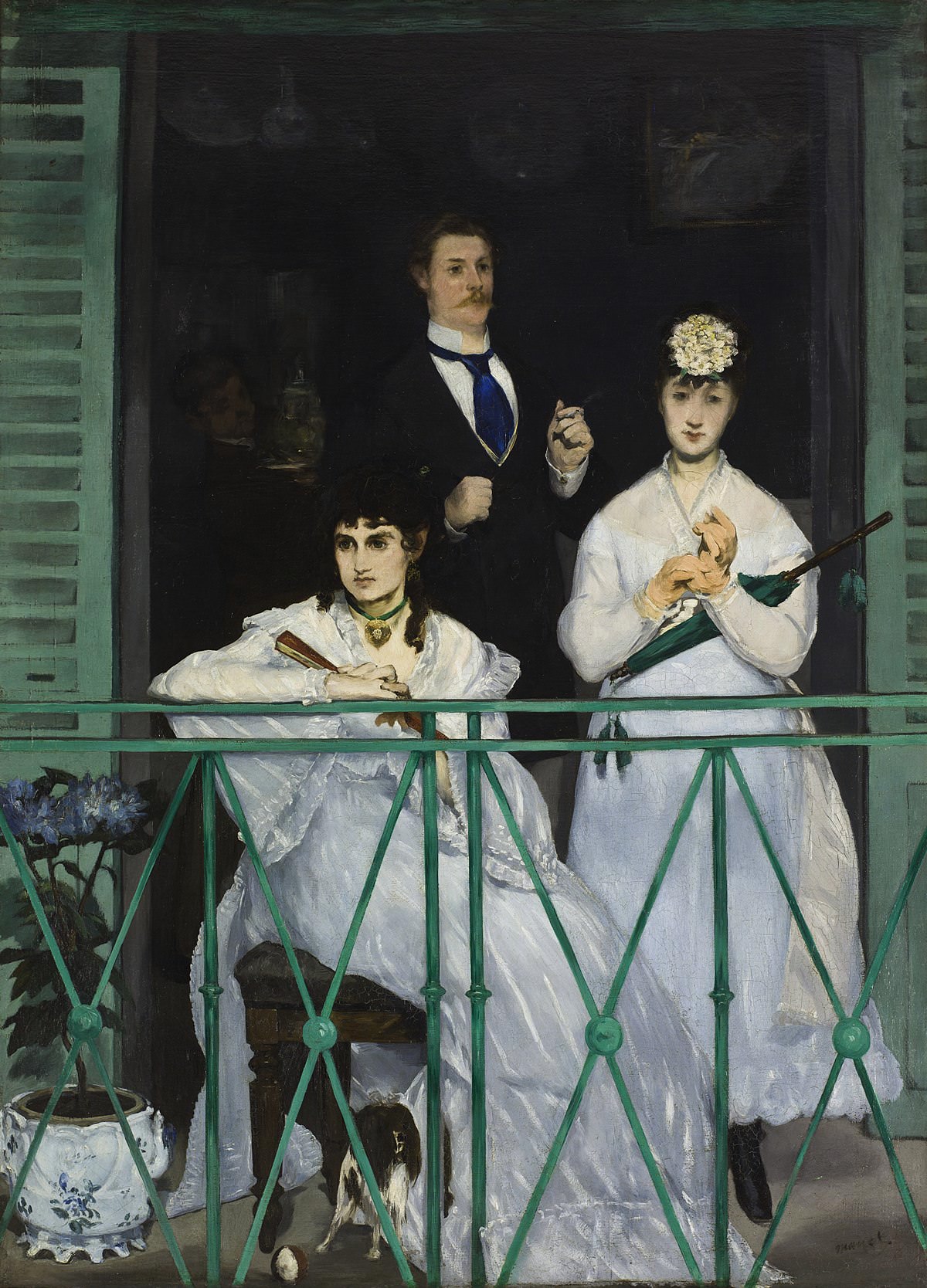The Balcony by Edouard Manet
The three figures in this work are, from left to right, Berthe Morisot, Antoine Guillemet (a landscape painter and friend of the
Impressionists), and Fanny Claus (a concert violinist). In the background can be seen a boy bearing a pitcher, presumably intended for
those on the balcony. Manet claimed that the idea for the work came to him after seeing a group on a balcony in Boulogne; another
inspiration is clearly Goya's Majas on a Balcony, though there are several other treatments of this theme also.
While Manet pays homage to the Spanish artist, he also emphasized their differences. In contrast to the animation and warm, harmonious
coloring of Goya's painting, Manet used bright, contrasting colors, and his figures seem oddly posed and distracted. Their formality is
highlighted by the lack of activity: each figure gazes in a different direction and there seems to be no interaction. The man's hand
gestures and expression suggest that he is totally absorbed in his thoughts, while Fanny looks blankly out at the viewer without seeming
aware of anything before her.
This disconnectedness, which now gives the work a poetic, mysterious air, was disliked by contemporary
critics when it was exhibited at the Salon of 1869. They expected a work of this nature to combine the figures into some comprehensible
image through narrative and other links. While the identity of the sitters is known, this knowledge explains little, and one could not
really call the work a portrait. The sitters themselves were not wholly pleased: Morisot felt she appeared strange, and Guillement claimed
that Claus looked 'terrible'. The bright green of the balcony and shutters, coupled with the startling blue of Guillemet's cravat, make
the coloring of the work most striking, enhancing its air of artificiality. The addition of the dog at Morisot's feet enlivens an
otherwise marginal part of the composition, a pictorial device used by Manet elsewhere (e.g. the cat in Olympia)
